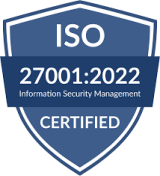Overview - Expenses on Tyms
Expenses on Tyms refer to financial transactions that are fully paid, such as salaries, vendor payments, subscriptions, and transportation costs. This module allows you to accurately track, categorize, and manage your business expenses for better financial visibility and bookkeeping accuracy.
Basic Functions- Expenses
Accessing the Expenses Module
To get started with expenses:
- Log in to your Tyms account https://app.tyms.io/auth and navigate to the Expenses section from the dashboard.
- Under the Expenses module, you’ll find four options:
- Bills
- Expenses
- Prepaid Expenses
- Recurring Bills
- Use the dropdown and select Expenses to begin managing fully paid transactions.
Creating a New Expense
- Click the New button at the top-right corner of the Expenses table.
- Select one of the following:
- Expenses: for individual expense entries.
- Expenses Import (Import in Bulk) : to upload multiple entries via a spreadsheet.
Note: Any expense recorded will be added to the expense table for easy tracking and review.
Filling in Expense Details
Complete the following fields in the New Expense form:
- Title (e.g., "Internet Subscription for July")
- Currency (e.g., NGN, USD)
- Vendor (The recipient of the payment)
- Date of the transaction
- Expense Ref ( document number)
- Expense Account (Choose from your chart of accounts)
- Item: Select an item from your list of items or;
- Select Add New to create a new item.
Manage Expenses
Configuring Expense Account Settings
Tyms provides two advanced configurations under Expense Account:
1. Split Expenses to Another Account
- Use this if you want to split the total expense across two different accounts.
- For example, if the total is ₦100,000 and you want to allocate 10% to a different category:
- Enable this checkbox
- Enter the percentage
- Select the second account (e.g., Salaries or Marketing)
2. Set Accounts, Discounts, and Tax per Item
- This allows you to assign:
- Different accounts to each item
- Discounts per item
- Tax per item
Tip: Use this if your expense involves multiple items or services that need individual tracking.
Adding Additional Information
Fill in these extra but optional fields to enhance your reporting:
- Employee (Who is responsible or made the purchase)
- Payment Terms (e.g., Paid Immediately, Net 30)
- Memo (Add a note or description)
- Branch (If this expense is for a particular branch)
- Department (Optional classification)
- Project (If this expense is tied to a specific project)
- Discount (Apply percentage or fixed amount)
- Attachment
- Shipping Fee (If applicable)
- Enable shipping information: Check this to enter shipping information.
- Shipping name: Enter recipient name.
- Shipping email: Enter the shipping email.
- Shipping phone: Enter the recipient’s phone number.
- Shipping address: Enter the Shipping Address.
- Tax: Select the applicable Tax rate for the transaction.
- Paid Through Account : This is the account used to make the payment, select the bank account the payment was made from;
- Cash
- Bank
Save the Expense
Once all fields are completed, click "Save" to record the transaction.
- Save as Draft: For later editing.
- Save as Published: Finalizes the bill entry.
Your expense will now appear in the Expenses Table, and you can always preview, edit, or delete it as needed.
Expense Statuses
Each expense entry on Tyms is categorized by status for easier tracking:
- Paid: The expense has been fully settled.
- Due Soon: Expense due date is approaching (if set).
- Overdue: Due date has passed with no or incomplete payment.
Managing Existing Expenses
Individual Expense Actions
Action column - Click the three-dot menu beside each expense to:
- Preview : View and manage the expense details.
- Edit: Make changes to the expense record.
- Duplicate: Create a draft copy of the expense for reuse.
- Delete: Remove the expense if it's no longer needed.
Bulk Actions
- Bulk Publish Draft Expenses:
- Use checkboxes to select multiple draft expenses.
- Click Publish to make them active.
- Bulk Delete Expenses:
- Select multiple draft or published expenses.
- Click the red trash bin icon to delete them.
- Export Expenses to Excel:
- Apply filters (by date, account, etc.).
- Click the Export to Excel icon to download filtered data.
Other Actions
Importing Expense Transactions in Bulk
You can upload multiple expense entries at once using a spreadsheet.
Steps:
- Navigate to Expenses > New > Expenses Import.
- On the import page, scroll down and click “Click here” to download the sample spreadsheet.
- Fill in the spreadsheet using the guidelines below.
Required Spreadsheet Columns:
- Date: This is the date of the paid_expenses transaction.
- Description: A broader description or note taken for the paid_expenses.
- Document_number: This is like a unique ID or reference for the paid_expenses.
- Item_name: The name of the transaction item.
- Item_price: The price of the transaction item
- Item_quantity: The quantity of the transaction item. We will multiply it by the item price when computing the total value of your paid_expenses.
- Category: This is the transaction relevant paid_expenses account from your chart of accounts under the accounting module.
- Flow: Indicates the direction of the transaction. For expenses, the flow is out, representing money leaving the business.
- Currency: In ISO format (e.g., NGN, USD, EUR)
- contact_name contact_email contact_phone: Vendor details
- payment_type
- payment_account
- Shipping_fee, discount
- project_name
- client_name
- added_tax
- Branch_name, department_name, salesperson_name
Summary
Recording expenses accurately helps maintain clear financial records and improves reporting. Tyms makes it easy to track every payment, from subscriptions and transport to payroll and vendor fees.


